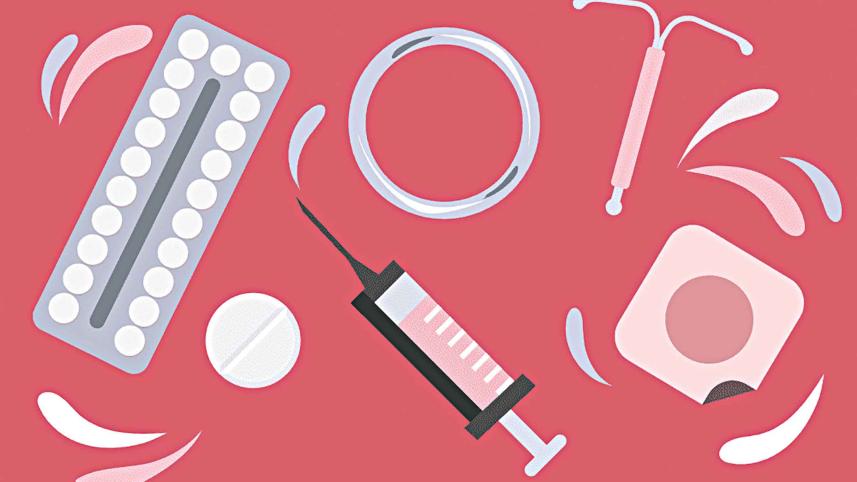Countering counterfeit medicine in Bangladesh

Pharmaceutical drug adulteration is rampant in Bangladesh. Some estimates suggest that the flow of fake medicine in the open market at any time could be around 2,500 crore taka. If stakes on human lives and suffering as a result is taken into reckoning, the consequential effect of that would be beyond any sum of money.
If this continues as such then the whole drug manufacturing industry of Bangladesh could eventually be marred with such adverse reputations that it might eventually shake the country's pharmaceutical export. Most importantly for the protection of human and animal health and as well as for the business interest of genuine drug manufacturers, the production and distribution of such counterfeit drugs must stop.
The World Health Organization (WHO) defines counterfeit medications as products that are deliberately and fraudulently mislabelled with respect to source or identity. These medicines can contain insufficient, incorrect or erroneous ingredients or have falsified information with wrong labelling.
In Bangladesh two main actors are parties to this malpractice (a) dishonest drug manufacturers who produce and release drugs in the market that don't meet the required standard. (b) criminal actors putting fake labels on items and selling them as genuine medicine. Such a problem is not unique in Bangladesh -- it happens in other parts of the world as well.
The World Health Organization mentions that in 2010 alone a fake drug industry worth $75 billion existed in the world. A research study revealed that in Africa, about 122,000 children under the age of five die each year because of fake paracetamol syrup. In many developing countries of Africa, Asia and South America counterfeit medicine constitutes about 10-30% of all medicines on the market.
New emerging trends in the field of information technology such as Internet of Things (IoT) and block chain will play a major role in the industrial sector in the coming years.
Blockchain is a decentralized technology that saves every transaction made on a network. This is a system of recording information in a way that makes it almost impossible to change or hack. It also ensures complete trust amongst non-trusting parties by asserting total transparency of information.
The Internet of Things (IoT) are objects that can collect, sense and record information from the environment and can transfer that data over a network ideally without human interaction. Prices of such sensors will keep falling making them affordable for the pharmaceutical companies to adopt this leading age technology.
Integration of blockchain and IoT would enable pharmaceutical companies to track their medicine during the entire journey from labs to consumers. This would improve the drug safety, making sure a verifiable provenance of who delivers what to whom, when, and where. Blockchain would overcome trust issues and allow authenticated and secure systems of information exchange in pharmaceutical companies.
The drug supply chain would collect data from all the associated players such as ingredient suppliers, manufacturers, distributors, pharmacies, and hospitals and save them in the blockchain system. Manufacturing units of the pharmaceutical industries can be equipped with IoTs that would record the manufacturing process and all the ingredients used as it happens and send that information to the blockchain application over the internet.
Medicine would be labelled with a unique digital fingerprint of the manufacturer. QR code or RFID tag would be attached on each packet of the products containing that fingerprint with a link to the blockchain system.
A large number of medicines, especially vaccines need specific temperature, darkness and humidity during storage. Such environmental factors must be controlled and monitored during transportation and storage in order to safeguard potency of a medicine.
During the distribution process, IoTs can monitor such environmental parameters of the containers that are used for transportation. The storage facilities of the hospitals and pharmaceutical wholesalers can also be monitored as such and data sent back to the blockchain system making that transparent to all.
The drug administration authority can access all the information about any particular medicine of a manufacturer by simply visiting the blockchain application on the internet. Similarly, when consumers get the product they can scan the QR code. This will navigate them to the system and subsequently to all the information about the medicine such as its origin, ingredients, how it was stored, expiry date etc.
An important question to ask here is who will own and administer the blockchain application? Ideally it is the drug administering authority of the government, but I suggest that it may be owned and managed by a central association of the drug manufacturers. This will safeguard it from corruption, since genuine manufactures have a very high business stake to keep the system corruption free, they will do everything in their power to keep it as such.
The writer is a senior IT specialist in the Australian public service



 For all latest news, follow The Daily Star's Google News channel.
For all latest news, follow The Daily Star's Google News channel.
Comments